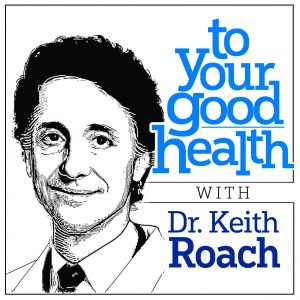Prostate-shrinking medicines and cancer
December 14, 2020 DEAR DR. ROACH: I’ve had low-grade prostate cancer for several years and am presently on “active surveillance.” My PSAs have been high but steady, running around 7.8 to 9.2. I have a greatly enlarged prostate, which I believe contributes to the high PSA numbers.
DEAR DR. ROACH: I’ve had low-grade prostate cancer for several years and am presently on “active surveillance.” My PSAs have been high but steady, running around 7.8 to 9.2. I have a greatly enlarged prostate, which I believe contributes to the high PSA numbers.
I would like your opinion regarding finasteride (Proscar), as I am considering taking it. I see one of its side effects is that it increases the risk of developing a very serious form of prostate cancer. Since I already have this cancer, am I at an increased risk of mine growing more aggressive? — D.N.W.
ANSWER: A 2013 study showed that although finasteride reduced the overall risk of prostate cancer from 15 percent to 10 percent in men followed up to 18 years on finasteride, there was a small increase in high-grade, aggressive prostate cancer, from 3 percent to 3.5 percent. However, there was no increased risk of prostate cancer death among treated men.
Several follow-up studies have suggested that the apparent small increase in aggressive prostate cancers reflected an easier ability to find these cancers, since finasteride shrinks prostate tissue, making it easier to both biopsy and read the results. My view is that the apparent increase in aggressive prostate cancer is unlikely to represent a real danger in taking finasteride. There is no evidence to suggest that finasteride would change the behavior of an existing tumor.
***
DEAR DR. ROACH: I have breast cancer and am being recommended anastrozole. Can you tell me the side effects, both short term and long term? — Anon.
ANSWER: Anastrozole is an inhibitor of the enzyme aromatase, which converts androgens made in the adrenal gland to estrogens. Anastrozole thus has the effect of dramatically reducing estrogen levels in the blood. For women with estrogen-sensitive tumors, this means less stimulus for the tumors to grow. Aromatase inhibitors like anastrozole have had a significant effect on improving cure rates and survival in women with estrogen receptor-positive breast cancer.
Aromatase inhibitors have been used for over 20 years; however, that’s still not long enough for a comprehensive understanding of long-term effects. There are short-term effects, and these limit the ability of some women to tolerate their use for the five years they are usually prescribed. About a third of women do not complete the course.
The most common reason I see for women stopping anastrozole is the musculoskeletal pain that often accompanies it. Symptoms can be severe in up to a third of women, but regular exercise and anti-inflammatory drugs are effective in reducing these symptoms.
There are sexual side effects for many women. The loss of estrogen due to anastrozole can cause vaginal dryness, which may lead to painful intercourse. This can be treated with lubricants, and most data suggests that low-dose vaginal estrogen is both safe and effective, although I recommend an individualized discussion with her oncologist before a woman takes that.
Fatigue, forgetfulness and poor sleep are often reported by women on anastrozole. Bone loss (osteopenia and osteoporosis) is more common in women on anastrozole. Nonpharmacologic strategies include regular exercise, calcium and vitamin D, and smoking cessation. However, many women need medical therapy if the bone density becomes dangerously low despite this.
While there are certainly downsides to taking anastrozole, they need to be balanced against the improved survival rates in women who take them compared with other treatments.
***
Dr. Roach regrets that he is unable to answer individual questions, but will incorporate them in the column whenever possible. Readers may email questions to ToYourGoodHealth@med.cornell.edu.
© 2020 North America Synd., Inc. All Rights Reserved







